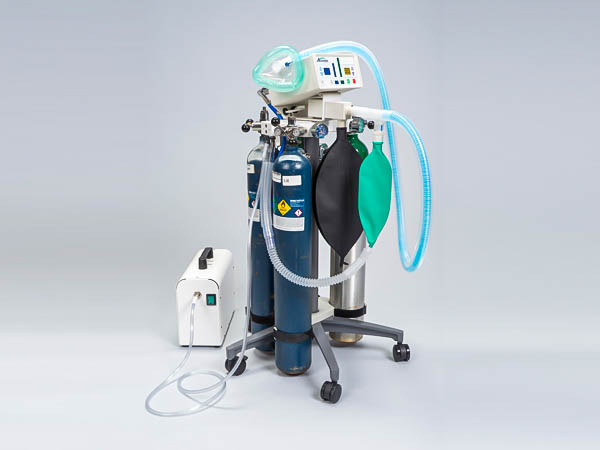
Give Pain and Anxiety
Something To Laugh About
- Opioid Safe
- Reduces Pain and Anxiety
- Rapid Onset & Offset
Nitrouseal is a safe and effective analgesia solution
for painful office-based procedures.
What is Nitrouseal?
Nitrouseal® is a proprietary nitrous delivery system developed by a Board-Certified Anesthesiologist specifically for administering nitrous sedation in any medical setting without exposing medical personnel to the exhaled nitrous. This is accomplished by utilizing a patented disposable facemask and breathing circuit (tubing) to administer the inhaled nitrous/oxygen mixture in combination with an FDA-cleared pump then capture and eliminate the exhaled nitrous from the treatment area.
The Nitrouseal® System has become the accepted standard for delivering nitrous sedation in most pediatric hospitals and many medical offices nationwide.

Photo credit: Sedation Systems
- Self Administered by Patient
- Individualize Dose to Maximize Effectiveness
- No Effect To Lungs and Heart
- Rapid Onset & Offset
- Can Drive Yourself Home
- Safe for Children and Adults
Nitrouseal is a Game Changer!
Our Intention:
Transforming the Management of Pain and Anxiety
during Medical Procedures
Commitment to Safety:
With mixed oxygen and used with no other
sedatives, nitrous oxide is the safest analgesia known.
Frequently Asked Questions (FAQ)
Q:
What is nitrous oxide (laughing gas)?
A:
It is a colorless, odorless, non-flammable, breathable gas used as a safe and effective minimal sedative in medicine and dentistry. Nitrous oxide causes a sense of euphoria and relaxation. First used in 1772 to relieve a tooth ache, it is fast-acting and helps millions feel more comfortable and experience less pain during medical procedures. It derives its nickname from its ability to give people a case of the giggles.
Q:
Is nitrous oxide safe?
A:
Yes, nitrous oxide (laughing gas) has been used since the late 1800s and it has the best safety record of any sedative agent when used alone (not in combination with other sedatives)! Many people forgo much needed medical care because of deep anxiety and fear of pain during the needed medical procedure. Nitrous oxide can relieve the anxiety as well as the pain during medical procedures.
Q:
What are the chief benefits of using nitrous oxide sedation?
A:
Nitrous oxide reduces anxiety as well as pain. It has an exteremely short duration so patients can safely drive themselves to and rom the medical procedure.
Q:
Who can benefit from nitrous oxide sedation?
A:
Anyone who’s anxious about a medical procedure or will be undergoing a procedure that is moderately uncomfortable can benefit from nitrous oxide sedation.
Q:
Will I feel any pain during the procedure?
A:
The effect varies between individuals. Most patients will not go back to having a procedure done without nitrous once they have had nitrous for a medical procedure.
Q:
What will I feel?
A:
That depends on the concentration of gas, and length of time the gas is administered, but, typically, patients report four phases of sensations.
- Phase One – You may start to feel a tingling sensation in your arms and legs similar to the sensation created when your foot falls asleep. This can occur within 30 seconds.
- Phase Two – Next, you may feel a rush of comforting and encompassing warmth.
- Phase Three – A Feeling of calm, well-being or happiness overcomes and envelopes you.
- Phase Four – In this stage, you may find yourself feeling sleepy, or it may be difficult to keep your eyes open.
Q:
How is nitrous oxide given?
A:
Nitrous oxide typically is inhaled thru a facemask, mouthpiece or nasal hood as a safe mixture of nitrous oxide and oxygen. Nitrous oxide can be self-administered by having the patient hold the facemask or mouthpiece in place.
Q:
What are the side effects of nitrous oxide sedation?
A:
Possible side effects include nausea, vomiting, sweating light headedness.
Q:
Who is not eligible to use nitrous oxide sedation?
A:
- Patients who are in their 1st trimester of pregnancy.
- Patients with the following medical conditions: recent (within 2 weeks) inner ear or eye surgery, emphysematous blebs, sever B-12 deficiency.
- Patients who’ve undergone Bleomycin chemotherapy within the past year.
- If a patient has had bleomycin chemotherapy in the previous year the oxygen that is administered along with the nitrous can damage the lungs.

